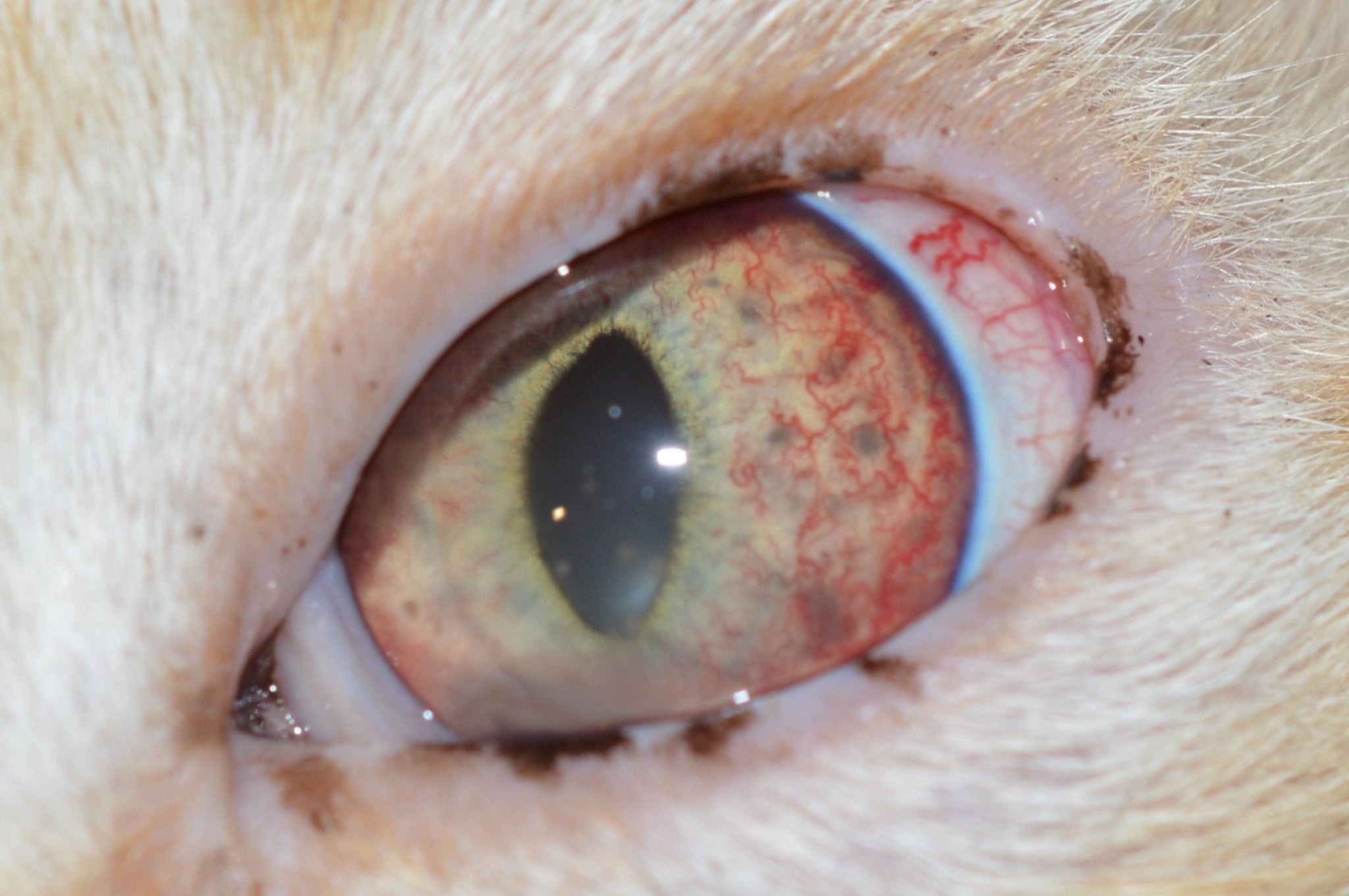Pet Uveitis (Inflammation) in Katy, TX
Uveitis is a condition that involves inflammation of the uvea, a crucial part of your pet’s eye. The uvea consists of three components: the iris, ciliary body, and choroid. When these structures become inflamed, it can lead to significant discomfort and potential vision loss in pets. At Animal Eye Medical & Surgical Specialists in Katy, TX, we specialize in diagnosing and treating pet uveitis, ensuring that your pet receives comprehensive care to support their eye health.
Understanding Pet Uveitis
Uveitis refers to the inflammation of one or more parts of the uvea. This inflammation can affect the iris (the colored part of the eye visible to the naked eye), the ciliary body, and the choroid (both of which lie behind the iris and pupil). Uveitis can disrupt the eye’s normal function by allowing inflammatory cells and proteins to leak into the eye, which can lead to various symptoms and complications.
When a pet has uveitis, you may notice several symptoms that indicate inflammation within the eye. These symptoms can vary depending on the severity and specific part of the uvea affected. Common clinical signs include:
- Redness: The eye may appear red due to the inflammation of blood vessels.
- Squinting or Rubbing: Pets may squint or paw at the affected eye due to discomfort or pain.
- Light Sensitivity (Photophobia): Pets might avoid bright light or exhibit discomfort in well-lit environments.
- Ocular Discharge: There may be an increase in tearing or mucus discharge from the eye.
- Pupil Asymmetry: The pupil in the affected eye might be smaller (miosis) compared to the other eye.
- Cloudiness: The eye may appear cloudy due to the presence of inflammatory cells in the eye’s fluid.
- Hyphema: In some cases, blood may be visible in the eye.
- Vision Loss: If untreated, uveitis can lead to partial or complete vision loss.
If your pet shows any signs of uveitis, early diagnosis and treatment are crucial to preventing serious complications. Call us today at 832-437-0119 to schedule a consultation and protect your pet’s eye health.

Causes of Pet Uveitis
Uveitis can be triggered by various underlying conditions that disrupt the normal blood-aqueous barrier within the eye. Some common causes include:

- Trauma: Injury to the eye can lead to inflammation of the uvea.
- Corneal Ulcerations: Ulcers on the cornea can trigger an inflammatory response in the uvea.
- Infectious Diseases: Bacterial, viral, fungal, or parasitic infections can cause uveitis.
- Vascular Disease: Conditions like systemic hypertension can affect the blood vessels in the eye.
- Fungal Diseases: Certain fungal infections can spread to the eye and cause inflammation.
- Cancer: Tumors in or around the eye can lead to uveitis.
- Autoimmune Diseases: The immune system can mistakenly attack the eye’s tissues, leading to inflammation.
- Cataracts: The presence of cataracts can sometimes result in uveitis.
Diagnosing and Treating Pet Uveitis
At Animal Eye Medical & Surgical Specialists in Katy, TX, diagnosing the underlying cause of uveitis is essential for effective treatment. The diagnostic process may involve:
Diagnostic Procedures
- Comprehensive Eye Examination: To identify the presence and extent of uveitis.
- Blood Tests: To check for signs of infection, cancer, or systemic diseases.
- Advanced Imaging: In some cases, imaging tests may be necessary to evaluate the structures within the eye.
Treatment Options
Once the cause of uveitis is determined, treatment is customized to the specific condition. Treatment options may include:
- Topical and Oral Antibiotics: To treat bacterial infections.
- Topical and Oral Steroids: To reduce inflammation and immune response.
- Non-steroidal anti-inflammatories (NSAIDs): To manage pain and inflammation.
- Dilating Agents: To relieve pain and prevent complications related to pupil constriction.
The objective of treatment is to improve eye health by re-establishing the blood-aqueous barrier. In some cases, lifelong treatment may be necessary to manage chronic uveitis.
Key Services at Animal Eye Medical & Surgical Specialists
Early detection and diagnosis of uveitis and other eye conditions.
Utilizing blood tests and imaging for accurate diagnosis.
Tailored treatments based on the underlying cause of uveitis.
Specialized care from a team with expertise in managing uveitis and other complex eye conditions.

